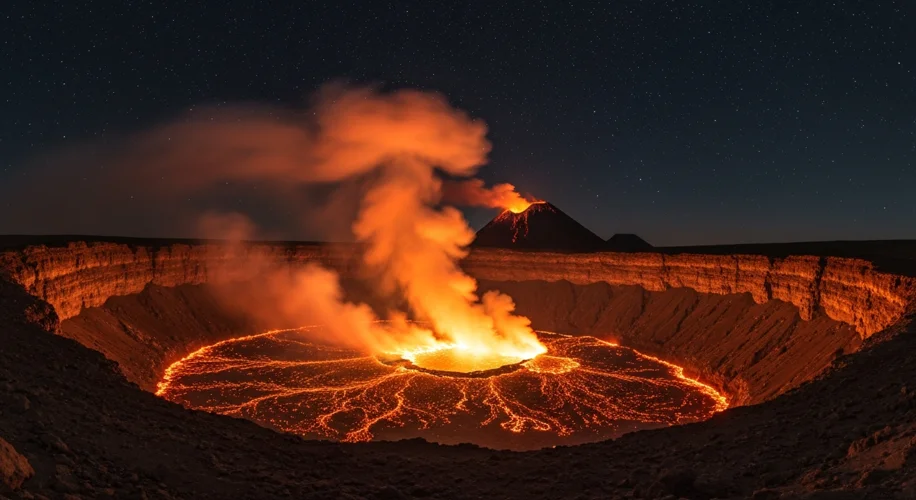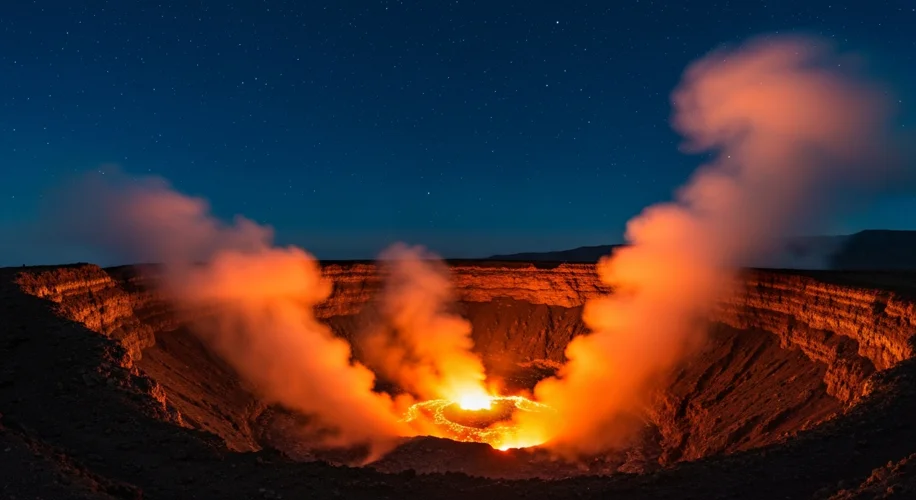Ethiopia, a land often associated with ancient empires and diverse cultures, also harbors a dramatic geological past – a past etched in fire and fury. Situated along the volatile East African Rift system, Ethiopia is a land where the Earth’s crust is literally tearing itself apart, a process that has shaped its landscapes and its history for millennia. From colossal eruptions that once reshaped continents to the simmering cones that continue to shape its present, Ethiopia’s volcanic story is one of raw power, profound influence, and enduring resilience.
The East African Rift Valley is not merely a geological feature; it’s a monumental scar across the continent, a place where tectonic plates are slowly, inexorably, drifting apart. This colossal rift stretches for thousands of kilometers, and Ethiopia lies at its complex, fiery heart. Here, volcanic activity is not an anomaly but a constant, underlying force. Over millions of years, this relentless geological engine has sculpted Ethiopia’s highlands, creating vast plateaus, deep valleys, and, of course, countless volcanoes, many of which have been, and some still are, incredibly active.
Imagine a time, not so long ago in geological terms, when colossal volcanic eruptions spewed ash and lava for weeks, even months. While precise historical records of the earliest, most devastating eruptions are scarce, geological evidence paints a vivid picture. These were not mere rumblings; these were cataclysmic events that could have altered global climate patterns, choked the skies with ash for years, and reshaped entire ecosystems. The sheer scale of these ancient eruptions is difficult for us to comprehend today, akin to a planetary fever that left its mark on the very bedrock of the land.
One of the most significant expressions of this volcanic power is the Afar Triple Junction, where the Red Sea Rift, the Gulf of Aden Rift, and the East African Rift converge. This is a zone of intense geological activity, and it’s here that some of Ethiopia’s most famous volcanic features are found. The Danakil Depression, for instance, is a starkly beautiful yet brutally hot landscape. It’s a place where sulfurous hot springs bubble, salt flats stretch to the horizon, and volcanoes like Erta Ale stand sentinel, famously hosting a persistent lava lake – a mesmerizing, ever-churning cauldron of molten rock.

Erta Ale, meaning ‘Smoking Mountain’ in the local Afar language, is one of the most active volcanoes in Ethiopia and a true spectacle of nature’s power. Its lava lake, one of only a handful in the world, has been continuously active for decades. Witnessing its incandescent glow against the night sky is to witness the Earth’s molten core made visible, a humbling and awe-inspiring experience that has captivated geologists and adventurers alike.
But Ethiopia’s volcanic story is not just about dramatic, large-scale eruptions. It’s also about the subtle, yet powerful, ways in which volcanic activity has influenced human life. The fertile volcanic soils, for example, have made Ethiopian highlands incredibly productive for agriculture, supporting the nation’s population for centuries. The hot springs and geothermal energy present opportunities for development, while the very presence of these powerful geological forces has woven itself into the fabric of local cultures and belief systems.
The consequences of Ethiopia’s volcanic past are deeply ingrained in its present. The landscapes are a testament to fiery creation and destruction. The rich agricultural lands owe their fertility to volcanic ash. And the ongoing activity, like that at Erta Ale or the numerous other cones dotting the landscape, serves as a constant reminder of the powerful forces at work beneath our feet. Studying these volcanoes isn’t just an academic pursuit; it’s a way of understanding the very foundations of Ethiopia’s geography, its natural resources, and even its cultural identity.
In conclusion, Ethiopia’s volcanic history is a gripping narrative of geological drama. It’s a story that continues to unfold, reminding us that our planet is a dynamic, ever-changing entity. The fiery heart of Ethiopia beats on, a constant source of both awe and potential peril, forever shaping the land and the lives of its people.

